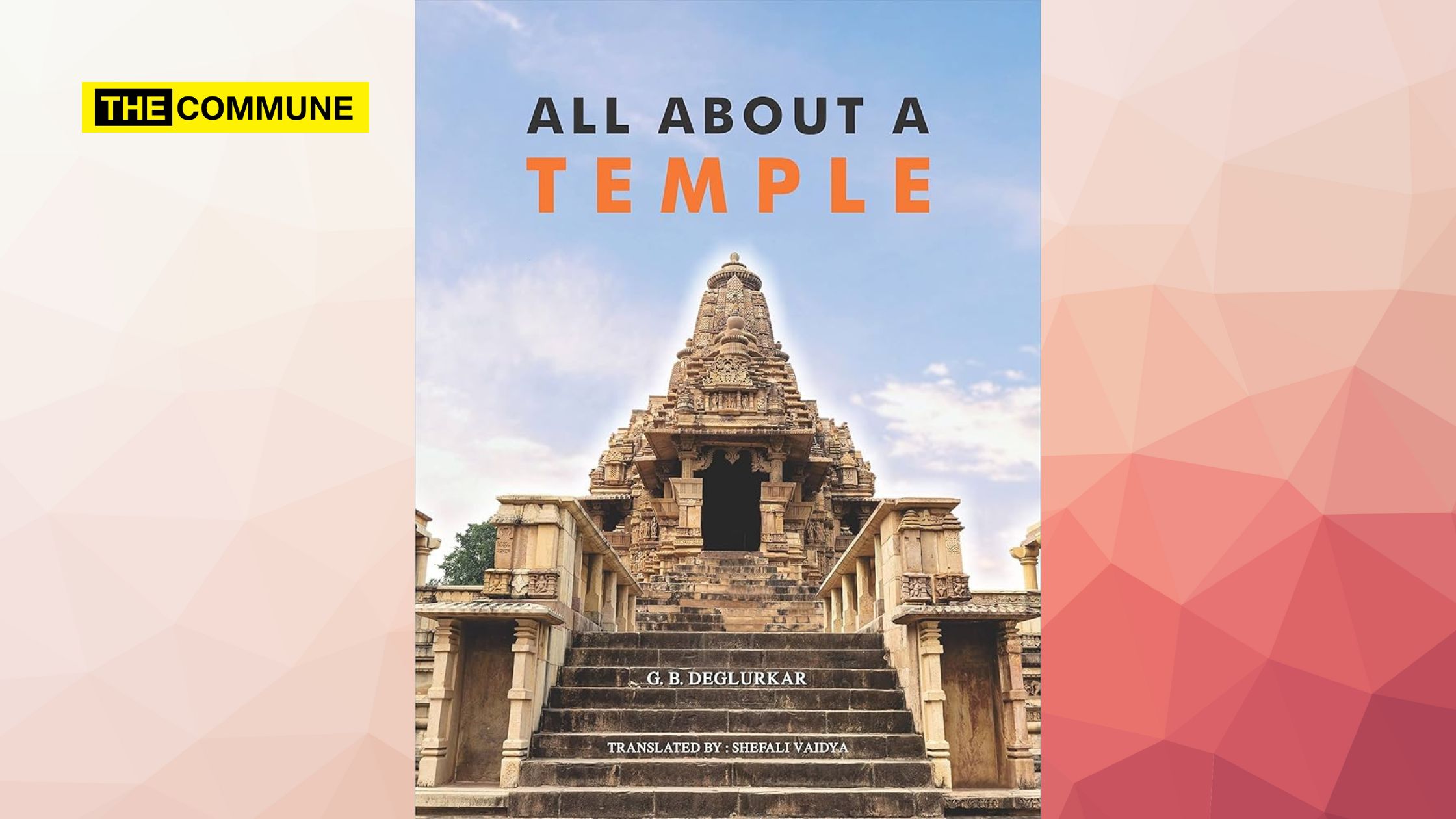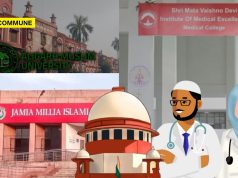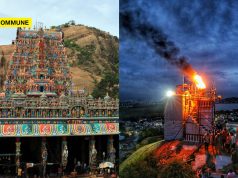
Temples in India are an integral part of everyone’s life, directly or otherwise. They hold a prominent significance in the socio-cultural and economic fabric of the community and country. Many books have been written to describe the architecture of the temples, but some are truly scholarly. In the pantheon of such pedagogic works, this specific book does rank very highly in terms of the richness of the content as well as the finely nuanced balance between the breadth and depth of the topics.
All about a Temple is the English translation of G. B. Deglurkar’s widely renowned book “Mandir Case Pahave” (मंदिर कसे पहावे). The translation by Shefali Vaidya is one of the very best I have read in the recent past. The English version does highlight all the key points of the topic, while not necessarily anglicising the terminology. Using Indic words to describe the various aspects of the temples or their key components is very judicious decision and enhances the reading experience.
In the prologue section, Deglurkar highlights the various aspects of the temple, yet perhaps misses one key significance. Temples are also the source of food to many, whether destitute or travellers, and have always upheld this tradition across centuries. In the chapter “In quest of a Temple”, the author’s statement about the manifestation of the culture is one of the finest.
In the description of the Vastu-Purusha-Mandala, Deglurkar refers to a specific Purana that would have been very beneficial for interested readers. However, it does need to be highlighted that he has provided very specific references to Puranas and other literary works throughout the book. This is definitely one of the standout features of this work.
Reference to Srimad Bhagwad Gita
Throughout the book, starting from the chapter on the concept of a temple and rituals, there are ample references to one specific verse from Srimad Bhagwad Gita.
पत्रं पुष्पं फलं तोयं यो मे भक्त्या प्रयच्छति |
तदहं भक्त्युपहृतमश्नामि प्रयतात्मन: || 9.26||
Temples manifest the timeless wisdom advocated by Sri Krishna, that Bhakti is far more important than materialistic offerings to the supreme power. Deglurkar has described how this aspect is followed in daily rituals in a very simple yet effective manner. In the same vein, a brief description of the shodashopachara rituals would have been more enriching.
Another highlight of the book is the excellent illustrations and very fine photographs. Though the photos are monochromatic, the details are preserved excellently and do not hamper the reader to relate the description to the photographs. The description of the temple plans and the methodology of identifying Shivaite vs Vaishnavite temples using the wall projections are very well captured.
One of the best sections of the book is on Surasundaris. The explanation of each of these forms and their relevance in the meta-physical space is excellent. The section on the symbolism of Surasundaris and why they are depicted on the outer walls of the temple is very important to understanding the thought process of our ancestors. The origins of Ganga and Yamuna carvings on the doorway and their significance and relationship to the period in which they were started is an intriguing read. As one enters a temple, we observe the dwarapalas on either side of the door. However, more often than not, we miss the finer details in the carvings. The spiritual significance of these carvings is very well explained at multiple junctures in this book.
On page 43, the author rightly criticises the Indian populace who marvel at the paintings of the West, yet don’t even acknowledge or appreciate the rich brilliance and artistry of our own ancestors. Even ceilings have a lot of scientific and spiritual significance as explained by the author in this context. The section on Hemadpanti temples is also very informative and quite well-detailed. The story of Kirtimukha (another aspect of our temples that is often overlooked) is very well explained and I would highly recommend the readers not to miss this interesting section.
One of the very best chapters of this book is Spirituality and Temple. I couldn’t help but compare this work with the iconic work of Prof. S. K. Ramachandra Rao. Though of the same genre, their approach to the subject is slightly different, yet very similar. The author has referred to the works of many Maharashtrian saints which is another highlight of this book. This would enable the readers to gain an insight into the teachings of these divine souls and perhaps seed an idea to read more about them.
In the chapter on ”The meaning of Murti”, the author outlines the very few locations where Shiva is worshipped in Murti form. Among the list, one more location should have been added. The depiction of Uma Maheshwara in Bhoga Nandishwara Temple near Bengaluru is in Murti form. Considering that this temple is more than 1000 years old, this should also have been a part of the list. In the same chapter, the iconographic details of Brahma are very informative.
Deglurkar skillfully highlights the role of a temple as a socio-cultural institution and the intricate role it plays in everyday life. The temple also plays a role in capturing Eco-Cultural history through various depictions on the wall. An excellent example of this concept is highlighted through the depiction of Odisha’s merchants gifting their King with an animal similar to a Giraffe. The book concludes with another excellent chapter on the must-visit places of India.
Overall, Deglurkar has written an excellent book that packs a lot of information on every page. This book is very beneficial to understanding the significance and symbolism of every single aspect of a temple and helps one to appreciate the enhanced knowledge of our ancestors to have come up with such magnificent structures. VERY HIGHLY RECOMMENDED READ.
Gee Vee is an engineer and avid fan of itihasas, puranas and books.
Subscribe to our channels on Telegram, WhatsApp, and Instagram and get the best stories of the day delivered to you personally.




